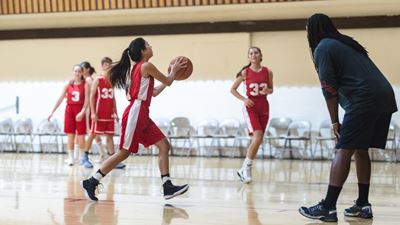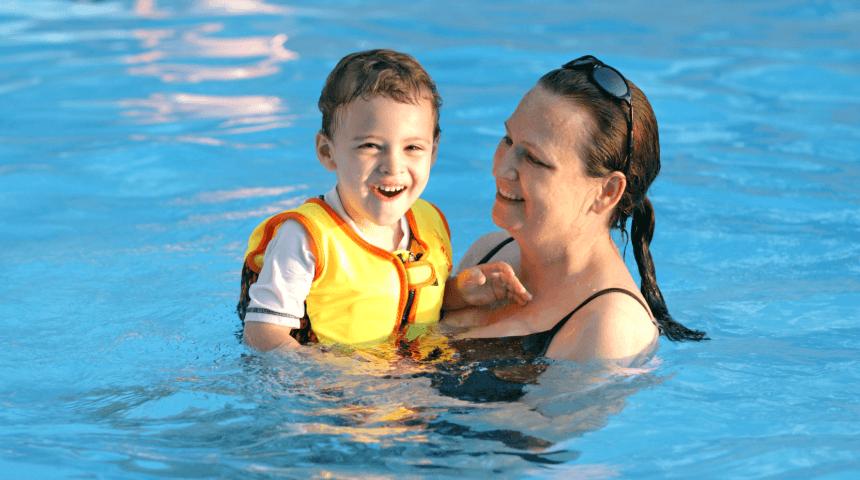While teamwork, hard work and fun are all important aspects of school sports, the focus also should be on safety. It’s up to coaches, families and medical practitioners to work together to ensure that athletic programs are committed to injury prevention and protocol — especially when it comes to concussions and other brain injuries.
So what can be done to lower kids’ chances of getting a concussion while playing sports? Here are a few things all parents should know.
What Is a Concussion?
First off, it’s important to understand what a concussion is, how and when it can occur, and what its symptoms are. The Centers for Disease Control and Prevention (CDC) describes a concussion as “a type of traumatic brain injury caused by a bump, blow or jolt to the head or by a hit to the body that causes the head and brain to move rapidly back and forth.”
Due to their higher incidence of collision and bodily contact, sports with an increased risk for brain injuries include football, lacrosse, ice hockey, basketball, soccer and baseball/softball. The risk of concussions even exists in sports where human-to-human contact is rare, such as swimming or cycling.
Although symptoms of concussions can simply be a child not “feeling right,” according to the CDC, signs of this brain injury often include:
- Inability to recall events prior to or after the impact
- Loss of consciousness (even if just for a moment)
- Appearing dazed or stunned
- Moving clumsily
- Answering questions slowly
- Forgetting an instruction or being confused by straightforward instructions
- Mood, behavior or personality changes
- Headache or “pressure” in head and/or double or blurry vision
- Feeling sluggish, hazy, groggy, confused or unable to concentrate
- Nausea or vomiting
- Balance problems or dizziness
- Being bothered by light or noise
When a child reports or presents any of these symptoms, it’s essential to follow established protocols for responding to potential brain injury.
Steps to Prevent Brain Injuries
Change the culture of school sports. Preventing children from suffering a concussion during play takes more than just proper helmets and other protective gear. Instead, the key to lowering the risk of brain injuries is creating a safe sports culture. All children should feel secure and confident reporting symptoms of a concussion to an adult. Students also should be taught to support any teammate who needs to sit out for the rest of practice or a game.
Initial steps should include putting the focus on fun and enjoyment instead of pressuring student athletes to push themselves past their limits. When children hear positive feedback from their coaches and parents about the importance of reporting symptoms of concussions, they’re more likely to do it in the future. Concussions and other brain injuries need to be frequently discussed with student athletes before engagement in a sport begins.
Enforce the rules of the game. Football, soccer and other intense, high-contact sports have rules about sportsmanship and fair play for a reason. Without these rules, the safety of student athletes plummets. It’s up to parents and coaches to ensure that these rules are enforced.
As outlined in the official policy of the Florida High School Athletic Association (FHSAA), prohibited behaviors that should be highly monitored include hitting other athletes above the shoulders; head-butting or using a helmet for striking; colliding with or tackling an opponent in an illegal manner; and purposely trying to injure another athlete. All of these unsafe actions should have immediate consequences to protect other children on the field.
Make a Concussion Response Plan. If an athlete takes a hard hit or fall and/or displays symptoms of a concussion, it’s best to remove the child from play until they’ve been checked over by a healthcare provider. No potentially injured student athlete should reenter a game until they’ve been thoroughly examined by a doctor or other qualified practitioner, such as an athletic trainer. Parents and guardians also should be immediately informed that their child has experienced a collision or fall, even if the child reports that they’re okay.
In response to clear trauma, a plan should be in place for getting that child emergency medical care as quickly as possible. For instance, who on the team is responsible for calling 911? Are there paramedics standing by? If a child displays symptoms of a concussion later at home, parents should contact their doctor right away.
Left untreated, concussions could potentially have long-lasting effects that follow a child into adulthood. Children can struggle with concentration and focus due to the symptoms of brain injury, making attending class and doing homework difficult or even impossible. Relationships, physical ability and even mental health also can suffer. But through diligent observation and effort, parents can help lower a child’s chances of getting a concussion or other serious injury while playing school sports.
Learn More About Sports Medicine at Orlando Health
Whether you're a weekend warrior or superstar in training, let the experts at Orlando Health help you stay in the best shape possible. Our sports medicine physicians and other clinicians work together to minimize your pain and recovery time.
Learn More










